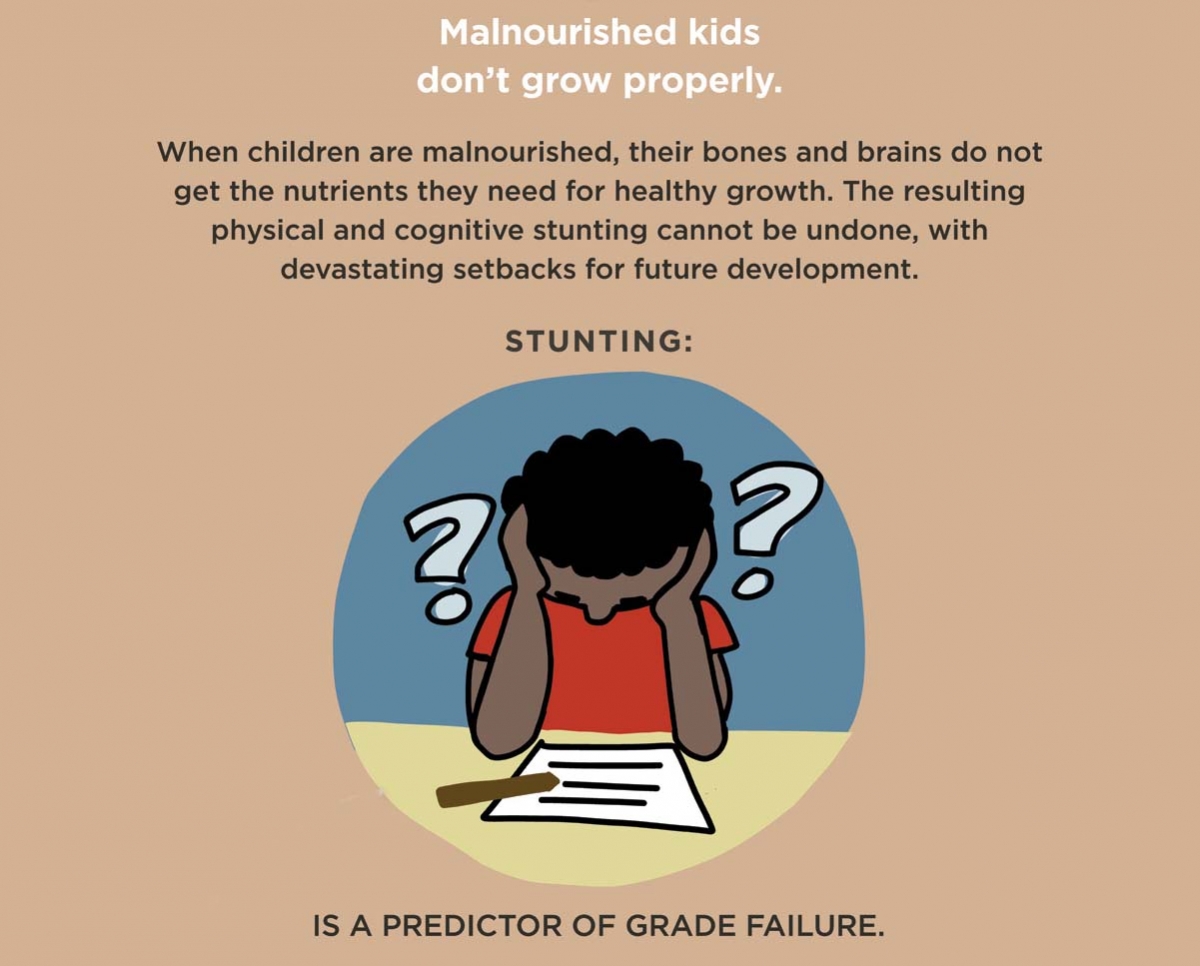
DefeatDD's visual on gut damage makes environmental enteropathy digestible

Long-term gut damage, called environmental enteropathy, catalyzes a chain reaction that limits the chances of children and communities to overcome a cycle of poor health.
There’s a plot twist in the global landscape of diarrheal disease, and the news is good and bad.
The good news is that fewer children are dying from diarrhea than ever before, proving the global investments are making an impact. The bad news is that many of these surviving children who struggle with repeated bouts of diarrhea are wounded for life by an unforgiving domino effect of physical and cognitive stunting. This is partly due to long-term gut damage caused by enteric pathogens, a condition known as environmental enteropathy (EE) and the subject of our new infographic.
EE explains why WASH is fundamental for combating malnutrition; pathogens from unsafe drinking water and limited sanitation and hygiene cause changes to the gut structure that prevent nutrient absorption. When this happens during a child’s first years of life, the long-term impact is devastating.
Having worked on the DefeatDD team for several years, there that are days when the statistics roll off my tongue (or keyboard) and I forget that each one represents a child’s life. But pouring over the latest research on EE kindled a renewed sense of urgency because after a certain point, the damage cannot be undone.

Our full infographic shows that the consequences of stunting extend beyond grade failure to also include an increased risk for chronic diseases and diminished income-earning capacity.
As Dr. Roma Chilengi said at PATH’s Vaccines against Shigella and ETEC (VASE) Conference, “We are saving more lives from diarrhea, but what is the future of kids who grow up sick much of their lives?” I’d hoped that the research I read on EE would offer some hope for ameliorating some of its consequences, but it is unequivocal about the irreversible nature of stunting. For me, that’s the toughest pill to swallow, and one of the most compelling cases for immediate action.
Behavior-change communications specialists will tell you that it is important for people to understand why they should adopt a certain behavior; it helps motivate change. The same goes for policy decisions, too. While learning about the consequences of EE was sobering for me, it was also gratifying to see a new angle on why investing in WASH makes an impact on nutrition and growth. The “Aha!” moment of the infographic is brought to you courtesy of digestive system biology:

I hope you’ll take the time to “digest” our new infographic and use it to help us spread the word about an integrated approach to diarrheal disease. Researchers are continuing to uncover new knowledge about the mechanisms behind EE, but we know enough to know that we can’t afford to wait. We have to continue to deliver and invest in tools to prevent the vicious and inter-generational cycle of stunting and poor health.
Special thanks to Dr. William Petri at the University of Virginia for sharing his expertise on EE!
For more information:
— Scientists as advocates: researchers reflect on the stories behind the numbers.
— Good nutrition and strong minds: hear experts weigh in on the connection.
— Peruse and share data points from our message map on malnutrition and diarrheal disease.


